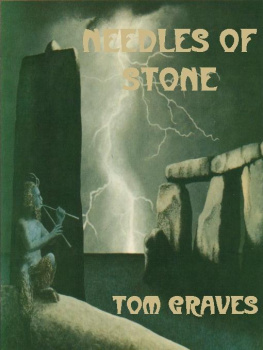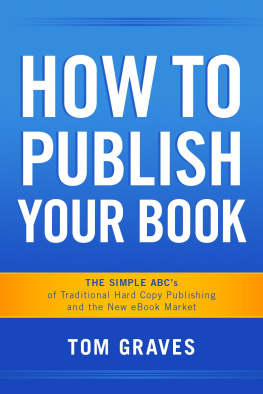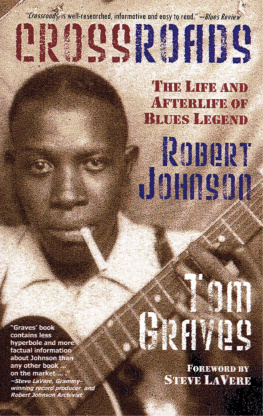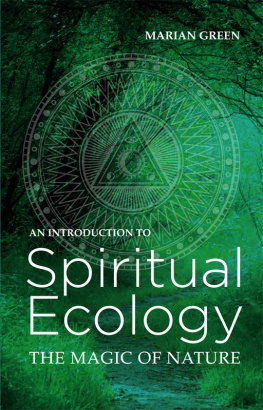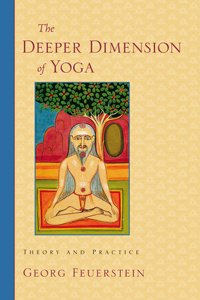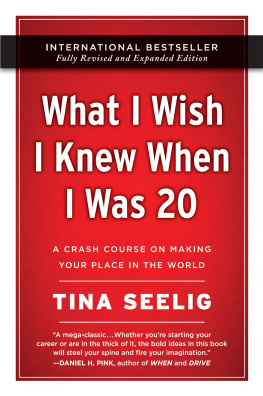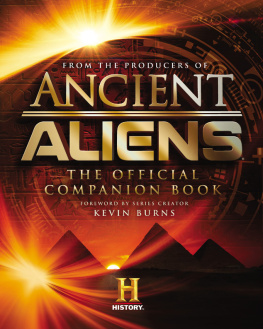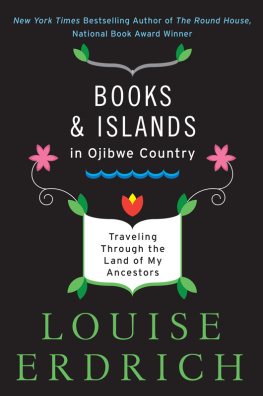Author's Note (eBook edition, 1998)
This eBook version of Needles of Stone is based most closely on the second edition ( Needles of Stone Revisited , Gothic Image, 1986). The text is essentially unchanged from the second edition: apart from a few OCR transcription errors which I'll no doubt have missed, the only significant difference is that I've reinstated a few paragraphs and sentences that were accidentally cut out during the preparation of the second edition. The footnotes and footnote-numbering are exactly as in the second edition.
I've avoided editing unless absolutely necessary: which means that in some ways the language structure may seem somewhat dated. For example, I'd be far more careful these days about avoiding the use of 'he' or 'his', such as occur far too often in the text for modern tastes; these days I'd also remove most of the ecofeminist-inspired male-blame that mars the book in more than a few places, even though many still seem to need it. If such things offend you, my apologies: that's who and where I was then; that's where we were then as a society. "The past is a foreign country: they do things differently there..."
Needles of Stone was my second book. It was first published in 1978, by Turnstone Books, long before they were swallowed up by the Thorsons/HarperCollins combine. I was lucky in that I'd met up with one of the best publisher/editors in the business - Alick Bartholomew, who now runs Gateway Books in Bath; trusting man that he is, he hardly changed a word from the original manuscript - though I had a close shave when I accidentally left the only copy of my final draft in a London furniture store, and very nearly had it blown up by the Bomb Disposal Squad! When the time came to check the page-proofs, Somerset was deep in snow, and the only way I could get to the printers in Bristol was by motorbike, sliding across the snow-drifts and dodging a huge snow-plough: a good job we did go, though, as two of the illustrations had been missed, and had to be reinstated.
Unlike my first book Dowsing: Techniques and Applications (still in print as The Diviner's Handbook ), Needles of Stone was too English to be much of an international success: there was a mass-market paperback by Granada, and the second edition by Gothic Image which stayed in print for another dozen years, but that was it. It was also, perhaps, too much ahead of its time: Paul Devereux of The Ley Hunter described it as 'only an ideas book', and commented, perhaps unkindly, that it seemed that I'd been a bit like "a small boy in a car, with [my] nose pressed to the window, wanting to be the first one to say 'there's the sea!'". Yet it's been surprisingly influential in its own quiet way: though I'll admit I wasn't pleased when I discovered that a certain well-known and obnoxiously arrogant New Age cult had based a central part of their ideology on a particularly stupid misreading of one of the analogies in the book... More constructively, I've been told recently by quite a few specialists that it's still the only book which provides a consistent overview of the entire earth-mysteries field, and which provides a firm theoretical foundation for more recent developments such as the upsurge of interest in feng shui and geomancy. And a few years back I was delighted to find, in discussion with an Aboriginal Heritage Officer who was visiting Melbourne from the 'Top End', that what I'd described in Needles is an almost exact description of some aspects of Aboriginal experience: he told me he'd previously had no idea that there was any Western tradition so close in concept to the complex system of thought and awareness that's so often mistranslated as 'the Dreaming'.
It's also true that, as I commented in the 'Preface' to the second edition, "more and more modern research adds weight to what so many dowsers have been saying for years: that something beyond our current understanding is active at the standing stones, those ancient 'needles of stone'". One example is the recent discovery at Stanton Drew of a succession of concentric rings enclosing the existing stone circle: although the archaeologists involved apparently did not know this, they'd used the same magnetometer technique pioneered by the Dragon Project research at Rollright, which in turn confirmed the pattern I'd found there by dowsing (shown in Figure 12, Chapter 3). Some of the same old archaeological fallacies are still promoted to the public - it's now known for certain, for example, that the Stonehenge bluestones did not come from the Prescelly Mountains in South Wales, though no archaeologist seems to have the courage to say so - but in general there's far more willingness to accept that the earth-mysteries have something useful to contribute to the archaeological debate. That's a real improvement, one that we'd never have expected then - though it's due in part to the hard work of Paul Devereux and others, ensuring a careful balance of analytic and intuitive in the earth-mysteries, no matter what the wilder end of the New Age movement might want!
Elsewhere? It's difficult to say. Although most of the formal references to Needles that I've seen have been from the arts world - Lucy Lippard's Overlay , for example - I've also seen some of its ideas quoted word-for-word in writings by the motorway resistance movement, for example, or by the peace campaigners in the mid-1980s. And I now live in a quiet country district in southern Australia, so these days I'm a long way from the mainstream of British politics and practice, or from the sometimes strange meanderings of the 'Glastafarians' and their ilk, always in the forefront of new environmental/spiritual developments. It does still seem true to say, though, that "Despite its flaws and its occasional forays into the overly implausible, the text seems to have stood the test of time": Needles is still a useful book, and I'm very pleased, and very grateful, that through the help of Palden Jenkins and the Glastonbury Archive it's been made available once more. Enjoy!
Tom Graves, September 1998
Tom Graves
PO Box 70
Malmsbury
VIC 3446
Australia
email: tom@wyrdsmiths.com
http://www.wyrdsmiths.com
The Glastonbury Archive can be found at http://www.isleofavalon.co.uk/archive.html
The Isle of Avalon website can be found at http://www.isleofavalon.co.uk
Needles of Stone
by Tom Graves
This book is a search for a magical technology: the elusive 'earth energies' connected with standing stones and other sacred sites. As Tom Graves puts it, "it is a study in ideas, an attempt to put some of the ideas that have arisen in the 'earth mysteries' field into a coherent shape or form, to place them in a context that makes practical sense at the present time".
Combining original research in dowsing with a review of many different aspects of the sites - from archaeology to geomancy and magic, from physics to ghost-hunting and parapsychology - the book shows that we need to look at them not so much in terms of the past, but in the effects and reality of those earth-energies now . It ends with a call for a re-assessment of the pagan view of reality, to see where its experience can be of value in our present over-civilized world.
This on-line edition of Needles of Stone is based on the second edition, published by Gothic Image in 1986, and includes that edition's additional chapter on developments in the 1980s, including a summary of the important Dragon Project research and its implications for our future.
Preface
This book is a study in ideas, an attempt to put some of the ideas that have arisen in the 'earth mysteries' field into some coherent shape or form, to place them in a context that makes practical sense at the present time.
It is not a thesis: I'm not trying to prove anything conclusively. Rather, I've tried to show where those ideas seem to lead us now, and where some may have misled us in the past. Some of these ideas may prove to be wrong, and many will and must change as new information arises: they can only be based on the present state of research into the 'earth mysteries'. But the underlying theme of the study - the idea that the earth itself is alive and aware - is ageless, and indeed is being reinforced rather than proved false as time goes by.
Next page
